Establishing Your New Mindset

"FYI": Further Your Improvement
Workshop360 includes not only reinforcement of previously trained content, but also extends knowledge and skills by offering additional tips and techniques to trainees through timed email messages or website messages exclusively available to previous attendees of the Workshop360 training.
As part of the Workshop360 Post-Workshop environment, when you subscribe, you will receive regular e-mails designed to help enhance your learning experience and encourage you to stay focused on achieving true behavioral change on the job. These e-mails are designed to reinforce the information communicated in the classroom setting and to offer additional insight and information that will help you achieve greater success in your job.
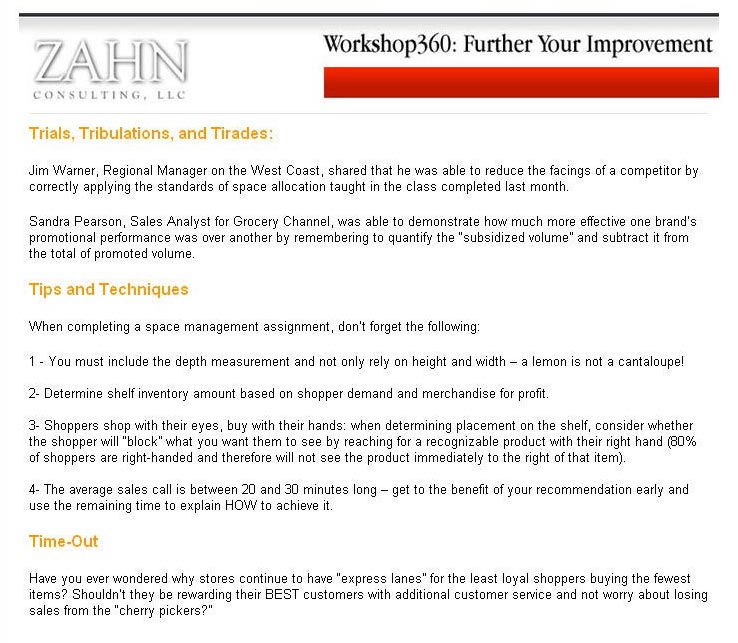
Podcasts: Information on the Go

Given the mobile nature of many employees, Workshop360 recognizes it may be easier for trainees to access and download helpful hints to reinforce their training through targeted podcasts that can be played over and over in a "just in time" fashion as business needs dictate.
 Podcast 1 - Handling Objections - The process of selling invariably requires addressing a buyer's objections. Sales people often fear or ignore objections and allow them to take them off track. Rather than view objections as negative outcomes, learn how to use them to further the intent of the sales call and ensure that the sales call does not get derailed or end in frustration.
Podcast 1 - Handling Objections - The process of selling invariably requires addressing a buyer's objections. Sales people often fear or ignore objections and allow them to take them off track. Rather than view objections as negative outcomes, learn how to use them to further the intent of the sales call and ensure that the sales call does not get derailed or end in frustration.
 Podcast 2 - Understanding Scanner Data - The tracking and measuring of sales performance is of critical importance to the retailer and CPG manufacturer and is often used to determine the success of various initiatives like assortment, pricing, promotion, etc. Discover the basic foundations of scanner data that will allow you to better understand how to interpret the reported results.
Podcast 2 - Understanding Scanner Data - The tracking and measuring of sales performance is of critical importance to the retailer and CPG manufacturer and is often used to determine the success of various initiatives like assortment, pricing, promotion, etc. Discover the basic foundations of scanner data that will allow you to better understand how to interpret the reported results.
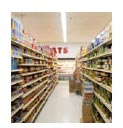 Podcast 3 - Space Management Issues - The amount of space allocated to products on the shelf continues to be an area of conflict between CPG manufacturer sales people and retailers. The determination of where to place best selling items, how to best position the store's own Private Label and whether to place items by a brand block or not are discussed and a recommendation is made for how to diffuse the contentious nature of these discussions
Podcast 3 - Space Management Issues - The amount of space allocated to products on the shelf continues to be an area of conflict between CPG manufacturer sales people and retailers. The determination of where to place best selling items, how to best position the store's own Private Label and whether to place items by a brand block or not are discussed and a recommendation is made for how to diffuse the contentious nature of these discussions
 Podcast 4 - Sales Presentation Essentials - No action is of higher importance to a sales person than properly presenting the manufacturer's suggestions and recommendations that will best position the brands, initiatives, and implementation ideas and result in higher performance levels. Uncover a technique that will provide clarity and focus to presentations and likely result in improved business results.
Podcast 4 - Sales Presentation Essentials - No action is of higher importance to a sales person than properly presenting the manufacturer's suggestions and recommendations that will best position the brands, initiatives, and implementation ideas and result in higher performance levels. Uncover a technique that will provide clarity and focus to presentations and likely result in improved business results.
Webinars: Collective Thoughts

Workshop360 is built upon the value trainees receive by sharing ideas, experiences, and successes with each other in applying the skills trained back on the job. Scheduled webinars where trainees can access the content remotely and participate as if in a meeting room together provides opportunity for sharing with colleagues and constantly refreshing knowledge and expanding on skills.
Slide 1 - Space Management Priorities
The squeeze for space at the shelf is ongoing. Manufacturers try to generate incremental sales through new item introductions and retailers focus on managing the space available to best meet shopper needs. Ideally, both parties should be aligned on meeting common goals and mutually uncovering opportunities for growth.
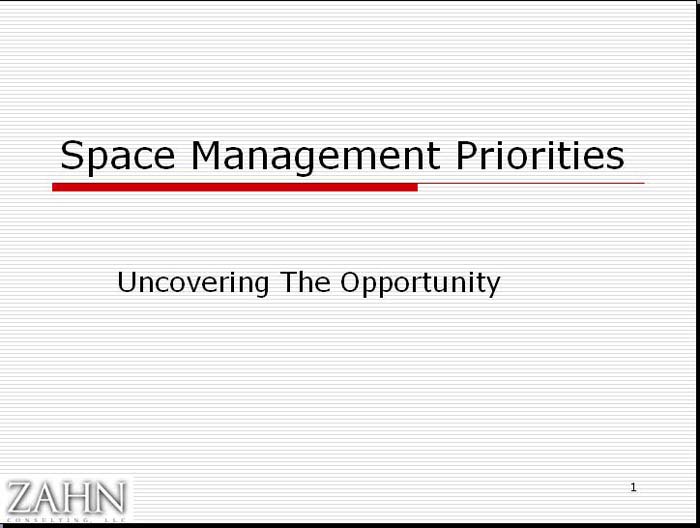
Slide 2 - Where We Are
The truth is that because they can't seem to find common ground, the industry players tend to conflict more than they cooperate and neither succeeds as completely as they would if they put the focus where it belongs - on collaborating to maximize the use of the space available to meet current and future shopper needs.
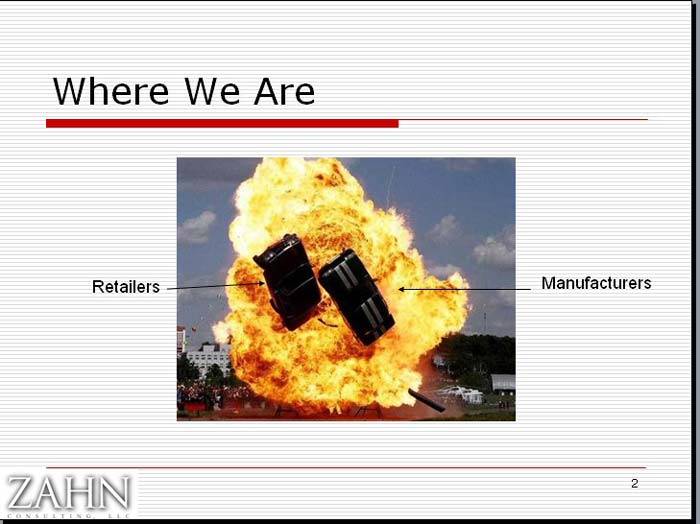
Slide 3 - The Crisis At Retail
However, there are areas where the retailer and manufacturer can coordinate efforts without fearing that they will be disadvantaged in the relationship with each other in their never-ending battle for control. In this workshop, we will look at some of the practical things that can be done to succeed.
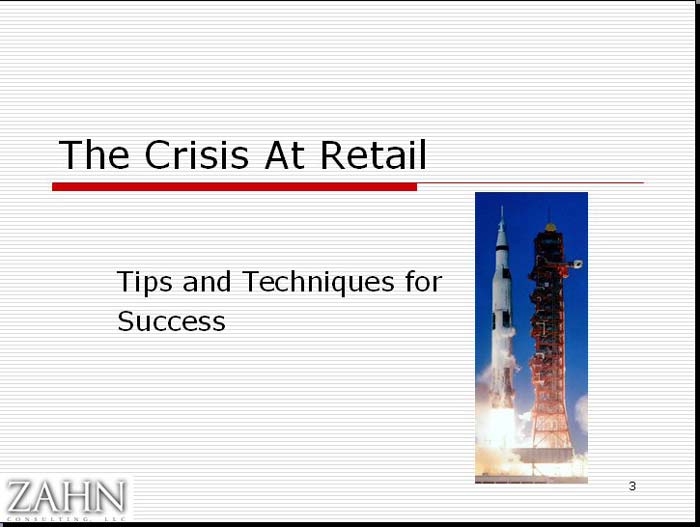
Slide 4 - Industry In Crisis
The first thing that needs to be established is the size of the opportunity. The impact of "lost sales" due to out of stocks is monumental and the effect of frequent out of stocks is often losing that shopper not only for that purchase occasion, but for future shopping trips. The lifetime value of a shopper can run into the tens of thousands of dollars. In part, the problem is in the analysis criteria applied to evaluate performance. Looking at aggregates or averages minimizes the uniqueness of each store's performance and reduces the accuracy of any analysis. Finally, the tug-o-war between retailers and manufacturers leads to disagreements on which organization is responsible for implementation.
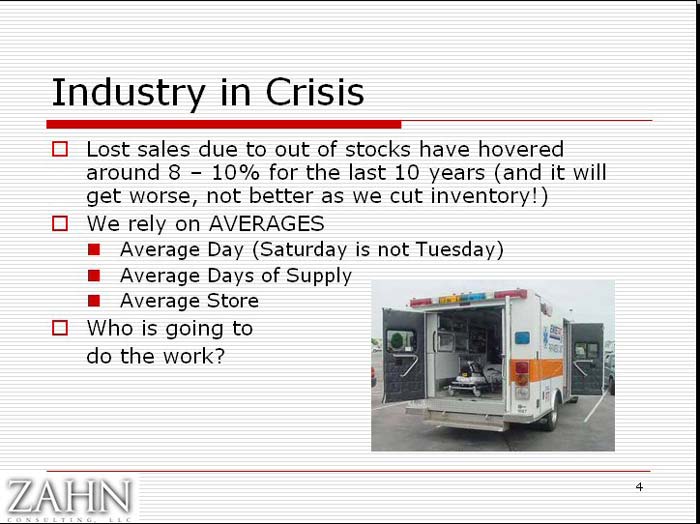
Slide 5 - So, We Establish It Belongs
A key concern in creating a planogram is the placement of a product once it has been determined that it belongs in the assortment or product mix. Among the considerations are the physical dimensions of the product, the consumer purchase decision hierarchy or consumer decision tree, and ease of stocking.
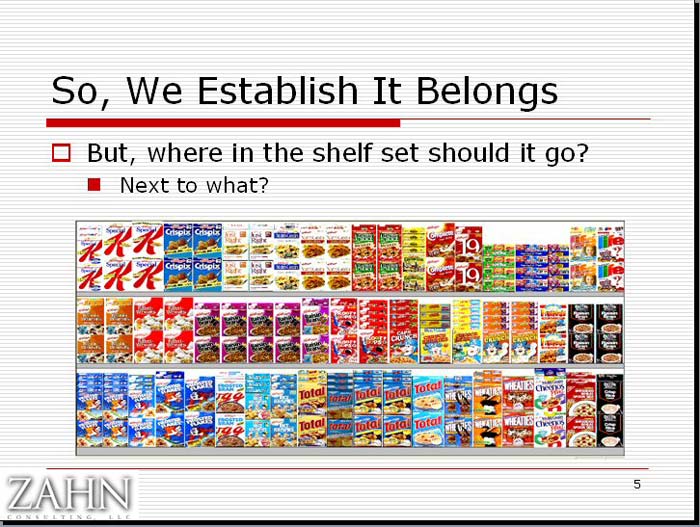
Slide 6 - Space to Sales Analysis
One common approach to determining how much space to provide to a product, or number of facings is the percentage of sales it represents of total category. This can provide a poor shelf set that is not based on shelf holding power and ignores other important metrics like profit and movement.
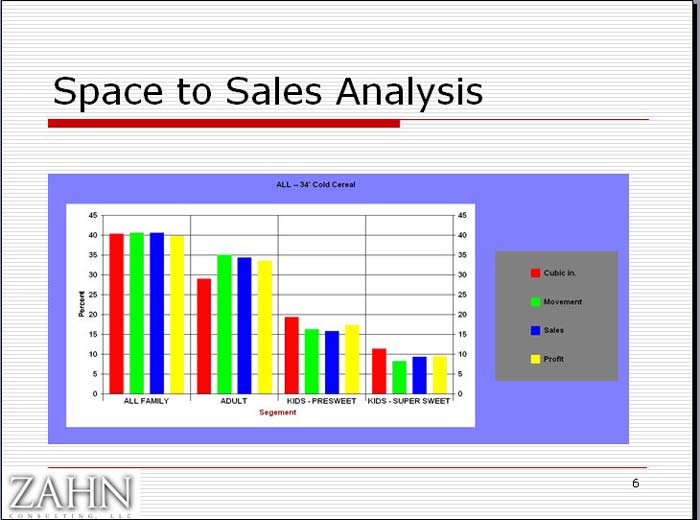
Questions to Ask Yourself
Are expectations, objectives, and standards clearly articulated and understood?
We may recall when we were kids that a common birthday game was to play “Pin the Tail on the Donkey,” where a child was blindfolded, often spun around a few times to make him or her dizzy and then asked to try to tape or pin a tail on a picture of a donkey on a wall. Or, we might have had occasion to try to try to strike a pinata to have it spill contents to the ground -only doing so as blindfolded and having someone often lift or drop the pinata as a child swung a stick at it. In both cases, the outcome was predictable. Often close, but not exactly successful.
Similarly, if employees are unsure of what is expected, how it will be measured, what success “looks like,” then they will do their best to reach it, but will often fall short of the intended outcome and fail to achieve what they would or could have if given more visibility into the requirements of the task and provided with the vision of success.

Office Phone - (203) 414-4794 • Cell Phone - 203-414-4794 • E-mail - davidzahn@zahnconsulting.com
© ZAHN Consulting, LLC. All Rights Reserved.